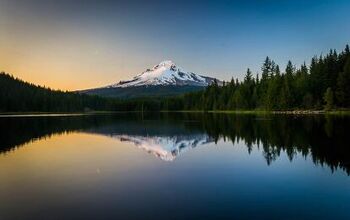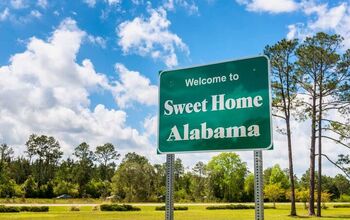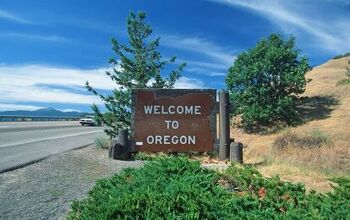What Are The 10 Fastest Growing Cities In Oregon?

Wanting to escape from the world into nature but still stay close to civilization? Moving to Oregon is the right thing to do. The entire state has impressive landscapes, some that have been formed from volcanic eruptions. From its rugged coastlines to its vast deserts and dense forests in between, Oregon offers a place that will give the impression of being in another world, and people know it!
After intensive research, we’ve found the ten fastest-growing cities in Oregon, starting with Happy Valley, which has a 66.7% growth rate, followed by Wilsonville at 27.4%, and Bend at 26.4%. There are several others as well that we will take you through.
Considered one of the greenest places in the United States, there are plenty of outdoor activities, such as biking and hiking, that are offered throughout the state. Oregon is filled with many quiet small towns that will offer peaceful places to call home. Continue reading to learn more about these fast-growing cities in Oregon.
Do You Need to Hire Movers?
Get free, zero-commitment quotes from pro contractors near you.

How Were The Fastest Growing Cities Determined?
The census is helpful when looking for population data trends over the course of however many years so that we can determine which cities have the quickest growth rate. We looked at 77 cities with over 5,000 citizens over the period of the past ten years so that we could create this list for you.
We looked at the population from the last decade, the population now, and the growth rate. We calculated the growth rate by following the formula below:
[(Current Population – Previous Population) / Previous Population] x 100
Fastest Growing Cities In Oregon
| City | Previous Population | Current Population | Growth Rate |
| Happy Valley | 12,583 | 20,971 | 66.70% |
| Wilsonville | 18,900 | 24,073 | 27.40% |
| Bend | 74,327 | 93,917 | 26.40% |
| Sandy | 8,860 | 11,070 | 24.90% |
| Hillsboro | 88,125 | 106,543 | 20.90% |
| Redmond | 24,957 | 30,167 | 20.90% |
| Independence | 8,215 | 9,842 | 19.80% |
| Molalla | 7,695 | 9,155 | 19% |
| Forest Grove | 20,635 | 24,457 | 18.50% |
| Oregon City | 30,983 | 36,492 | 17.80% |
1. Happy Valley
- Current Population: 20,971
- Previous Population: 12,583
- Growth Rate: 66.7%
The area became known as Deardorff Valley or Christilla Valley in honor of Christian and Matilda Deardorff, who first settled in the area.
It also had a name of Happy Hollow, and history is a bit unclear, but some believe that over time residents combined parts of the names for what the city is called today, Happy Valley. It was founded through The Donation Land Claim Act of 1850 and was officially incorporated in 1965.
According to the U.S. Census, this town is considered the states wealthiest. Happy Valley City is a perfect family town; not only is the town within Portland’s city limits, but they also boast state-of-the-art schools and newly constructed homes. They also benefit from very low crime rates.
2. Wilsonville
- Current Population: 24,073
- Previous Population: 18,900
- Growth Rate: 27.4%
The town of Wilsonville was founded by the grandson of Daniel Boone, an American frontiersman. His grandson settled in the area in 1846 and established Boones Ferry across the Willamette River. The ferry attracted more settlers to the area, and the community was growing.
The residents enjoy many parks; one of the largest and oldest parks is Wilsonville Memorial Park. One of twelve, it includes a water park area, sports field, and many other amenities. The town also holds a few arts festivals each year, one used to be called Boones Ferry Day, now called Wilsonville Celebrations Day.
3. Bend
- Current Population: 93,917
- Previous Population: 74,327
- Growth Rate: 26.4%
The area that is now known as Bend was only well known to Native Americans until 1824, when fur-trapping parties visited the area. The name for the town was derived from a designated spot used by pioneers that were referred to at “Farewell Bend.” Eventually, the town was plotted, and the location along the Deschutes River formed the town. It was officially incorporated in 1905.
The town relied on logging, and the first commercial sawmill was built in 1901. The town is now the county seat of Deschutes County and is considered the largest city in central Oregon. Residents of Bend enjoy many outdoor activities such as biking, hiking, fishing, and camping. In 2015, it was ranked as one of the “10 Best Places to Live” in Men’s Journal.
4. Sandy
- Current Population: 11,070
- Previous Population: 8,860
- Growth Rate: 24.9%
Founded around 1853, Sandy got its name from the Sandy River that was nearby. The Sandy River was named by the great explorers Lewis and Clark. The first settlers were Francis and Lydia Revenue, and there was a prosperity of resources in the area, including berries, fish, and deer. In 1911 the town was incorporated, and the economy relied on logging and sawmill operations since there was plenty of forest surrounding the city.
With the growth of the Portland metropolitan area, so did the city of Sandy. The city of Sandy is nestled at the foothills of the Cascade Mountain Range and is considered the western gateway to Mount Hood Corridor.
5. Hillsboro
- Current Population: 106,543
- Previous Population: 88,125
- Growth Rate: 20.9%
Hillsboro community was founded by David Hill, Richard Williams, and Isaiah Kelsey, who arrived in the Tualatin Valley in 1841. The area was called East Tualatin Plains and Columbia before it was named “Hillsborough.” The town was incorporated in 1876 and is considered the county seat for Washington County. The Washington County Courthouse is listed as a historic landmark.
Hillsboro is also home to many technology companies, including intel and Epson. Another company that enhanced Hillsboro’s economy was Tektronix, which started manufacturing oscilloscopes, a device used for viewing electrical currents. It was the first company along “Silicon Forest,” which is a group of high-tech firms along a highway.
6. Redmond
- Current Population: 30,167
- Previous Population: 24,957
- Growth Rate: 20.9%
In 1905, Frank and Josephine Redmond settled in an area, and a year later, the land was plotted by a company to build a canal. The town quickly grew, and within another few years, the railroad was being built in town. The railroad offered an opportunity for farmers and merchants to sell their products to other communities.
Redmond is found in Deschutes County, and within the 1990s, the population began to grow with most of the county. Prior to the 90s, the city saw slow growth with new retailers and manufacturers.
The city is ever-evolving and growing industrially and residentially. The growth is based on the fact the city has excellent employment opportunities and a lower cost of living.
7. Independence
- Current Population: 9,842
- Previous Population: 8,215
- Growth Rate: 19.8%
John Thorp, a pioneer from Missouri, set out on the Oregon Trail with his family in 1844. They arrived and laid claim to an area north of Ash Creek in 1845. They established the town and named it after their hometown, Independence, Missouri. The town was a success and a starting point for many emigrants moving westward; however, this all came to an end in 1861 when a flood destroyed the town.
Hesitant to rebuild in the original locations, residents looked to Henry Hill to establish a new town south of Ash Creek, which was higher and flatter ground. Thorp’s and Hill’s towns of Independence were incorporated in 1885, and “Thorp’s Town” is referred to as “Old Town.”
“Hop Capitol of the World” is the name given to Independence in the late 1890s. The town was thriving on growing, cultivating, and harvesting hops, a plant used in the brewing of beer. In the 1920s and 1930s, there were almost 4,600 acres of land fertilized with hops, and harvesters flocked to the area, set up tents, and loaded up their wagons and boats with their reaping.
8. Molalla
- Current Population: 9,155
- Previous Population: 7,695
- Growth Rate: 19.0%
The Molalla River, which the town was named after, was named for the Native American tribe Molala, who inhabited the area first. The city is a rural community about thirty miles southeast of Portland.
The post office was established in 1850, then re-established in 1875, and the first schools and general stores were operating by 1857. The town was thriving, focusing on agriculture and trading with surrounding communities. Then in 1913, the town was incorporated as a city.
Molalla is the entryway to the Molalla River Recreation Corridor, which attracts thousands of visitors every year. Here residents and tourists can enjoy horseback riding, fishing, swimming, camping, and so much more.
The city focuses on diversity for its economy by investing in manufacturing and commercial businesses. They even hold a professional rodeo event, Molalla’s Buckeroo, which brings top-ranked cowboys to the community every year.
9. Forest Grove
- Current Population: 24,457
- Previous Population: 20,635
- Growth Rate: 18.5%
The Kalapuya Native Americans originally inhabited forest Grove, and white settlers started to move into the area in the 1840s. The city was plotted in 1850, and the name was decided on a year later at a trustee meeting.
A resident and trustee member, J. Thornton, suggested the name he used for his homestead, which had a grove of oak trees that still stand today. The town was shortly incorporated later in 1872, and this made it the first city in Washington County, Oregon.
Forest Grove’s economy was sustained on farming, and as the steamship became more popular, it promoted industrial growth. Now the economy focuses on high-quality wood products, education, and winemaking. The city is both urban and rural, which what makes it such an attractive environment for residents to live and work.
Do You Need to Hire Movers?
Get free, zero-commitment quotes from pro contractors near you.

10. Oregon City
- Current Population: 36,492
- Previous Population: 30,983
- Growth Rate: 17.8%
The first city to be incorporated west of the Rocky Mountains in 1844, Oregon City played a significant role in the history of Oregon Country. It was established by the Clackamas River to take advantage of the Willamette Falls in order to run the lumber mill.
It has been known for decades to have a lot of large paper mills. For a few years, it was considered the capital of Oregon Territory until Portland prevailed and remained as such. Now the city is part of the southern Portland metropolitan area.
With the growth of Portland, Oregon City has become one of the largest suburbs of Portland. Tourism has grown based on the town’s history, and opening the Willamette falls to the public. The Oregon City Bridge, which is found over the Willamette River, is listed on the National Register of Historic Places.
More Related Guides

Heather is a passionate writer who loves anything DIY. Growing up, she learned everything from home repairs to design, and wants to share her tips with you. When she's not writing, she's usually hiking or searching for her next DIY project.
More by Heather Robbins



























